Results 6,471 to 6,480 of 12095
Thread: Anandtech News
-
11-17-16, 06:51 AM #6471
Anandtech: Qualcomm Announces Next-Generation Snapdragon 835 SoC Using Samsung’s 10nm
Qualcomm revealed the name of its newest SoC, the Snapdragon 835, at its Snapdragon Technology Summit in New York today. The new SoC replaces the Snapdragon 820/821 at the top of its lineup. While Qualcomm is not yet ready to disclose the specifics about what’s inside the Snapdragon 835, it did confirm one important detail.
Keith Kressin, Senior Vice President of Product Management at Qualcomm, took the stage with Ben Suh, Senior Vice President of Foundry Marketing at Samsung Systems-LSI, to announce that the Snapdragon 835 will use Samsung’s 10nm "10LPE" FinFET manufacturing node. We do not know the Snapdragon 835’s power or performance numbers yet, but according to Samsung its 10nm process “allows up to a 30% increase in area efficiency with 27% higher performance or up to 40% lower power consumption.” The switch from 14nm to 10nm, along with other changes, give the Snapdragon 835 a smaller die size than the Snapdragon 820 SoC, and should also help improve battery life.
The Snapdragon 835 is already in mass production and on schedule to appear in commercial devices during the first half of 2017.
More...
-
-
11-17-16, 10:35 AM #6473
Anandtech: Adesto EcoXiP: Optimizing Memory Interfaces For Embedded Systems
There is no Moore's Law for flash memory. Unlike transistors, flash memory cells can no longer be made any smaller or faster without incurring reliability tradeoffs that negate the benefits of a process shrink. This has forced the solid state storage industry to look elsewhere for potential improvements. The long-term hopes are focused on a variety of non-volatile memory technologies that are years away from reaching the cost and density of NAND flash, but promise vast improvements to endurance, latency or power consumption. In the meantime, the challenge is to reduce cost or increase the performance that is possible from flash memory by changing how it is organized and accessed.
In the PC SSD market, two major shifts are underway to satisfy the need for continued progress in spite of the stagnation of the fundamental underlying memory cell technology. 3D NAND flash is replacing planar NAND flash, enabling density to continue growing and cost per bit to decline further while keeping the memory cell large enough to provide acceptable write endurance. Further up the storage stack, PCIe and the NVMe protocol allow for substantial improvements in throughput and latency as compared with the SATA interface.
But the SSD market is hardly the only outlet for flash memory technology. 3D NAND flash is beginning to replace planar NAND in smartphones and memory cards, and faster host interfaces are available for those markets. For even smaller embedded systems, NOR flash is still used. In these markets, low power and cost are often a higher priority than capacity and performance. The increasing popularity of the Internet of Things means many of those devices now have to include full network stacks supporting IPv6 and LTE, and thus their storage requirements have increased substantially.
Adesto is one of the many companies developing a new non-volatile memory, but their conductive bridging RRAM (CBRAM) so far only offers sub-megabit capacities. Adesto's flash memory products are tailored for low-power embedded and IoT applications. Optimizing a memory product for these uses typically means using a low pin count interface like SPI and implementing extremely low-power sleep states. Erase block sizes are tuned to suit expected access patterns.
Adesto's latest family of flash memory products makes some more drastic changes. Their EcoXiP line is intended for systems with an Execute In Place (XiP) memory architecture where the processor fetches code directly from flash into the instruction cache rather than loading it into a separate DRAM or SRAM bank. XiP systems save money by requiring less RAM, but at the cost of making CPU performance highly dependent on the performance of the flash.
EcoXiP introduces a new mode for reading data that is designed to minimize the latency and command overhead of handling instruction cache misses. When the processor needs to branch to an address that is not in the instruction cache, it can issue a read request starting at the exact byte that is required. After the unavoidable latency of issuing the command and waiting for the flash to be read, the EcoXiP memory begins streaming the data from the requested byte. After reaching the end of the cache line the EcoXiP memory automatically wraps around to the earlier portion of the cache line so that the processor can fully populate that cache line while execution continues. The EcoXiP memory can then optionally proceed to sequentially stream subsequent cache lines in-order without requiring new read commands and addresses to be issued. Adesto estimates that the combination of delivering the most important byte first and enabling fast pre-fetching can increase effective CPU performance by over 40% for the case of a 266MHz processor using a 133MHz Octal SPI interface to flash with 100ns access time.
EcoXiP memory devices also support configuring the memory to behave as two independent banks. A single NOR flash bank cannot perform reads and writes simultaneously, which for an XiP device typically means the flash has to be treated as effectively a ROM device. Partitioning the device into separate banks allows the same chip to be used for both XiP operation and data logging, or to allow a software update to be installed to the second bank without suspending execution from the first bank.
The obvious downside to these innovations is that it is non-standard behavior. SPI itself is not a formal standard, but it is a widely supported de facto standard that has been around for decades, and JEDEC has defined a standard for querying the capabilities of SPI flash devices (similar to SPD and XMP for DRAM modules). Adesto's protocol extensions require modifications to the processor's memory controller and using EcoXiP will influence other system-level design decisions about memory and storage. Adesto has secured the support of microcontroller vendor NXP and IP vendors Synopsys and Mobiveil, so they should have no trouble building the market of devices that support EcoXiP memory.
Just as NVMe's benefits over SATA will continue to help as SSDs using new persistent memories like 3D XPoint instead of flash come to market, Adesto's protocol optimizations are not limited to just flash memory devices. Since most new persistent memory technologies will initially be available in capacities too small to directly replace NAND flash for SSD use and many of those technologies will be more economical to use as discrete memory devices rather than embedded memory integrated on SoCs, we will probably see several vendors producing specialized memory devices with optimizations similar to those used in Adesto's EcoXiP.
EcoXiP memory is initially available as a 32Mb (4MB) device rated for 100,000 Program/Erase cycles and 20 year data retention, with a maximum transfer rate of 266MB/s. Capacities up to 128Mb (16MB) are planned.
More...
-
11-17-16, 12:19 PM #6474
Anandtech: Capsule Review: The Zalman ZM-K650WP Gaming Keyboard: Waterproof at $30
A number of manufacturers have been trying to fill in the gap between electronic and mechanical keyboards. In this review we are having a look at the Zalman ZM-K650WP, a membrane dome based gaming keyboard that has been designed to mimic the appearance and feeling of a mechanical keyboard but also promotes a waterproofing layer to prevent gaming accidents. The idea of the low price plus protection means that Zalman is aiming this market for many use cases, especially in environments where a quick scrub with soap and a brush might be a good thing.
More...
-
11-18-16, 03:24 AM #6475
Anandtech: AMD Releases Radeon Software Crimson Edition 16.11.4 Hotfix
Continuing with a steady stream of updates, we are here with a new driver from AMD. Radeon Software Crimson Edition 16.11.4 brings the core driver version up to 16.40.3211. Looking at the list we might be at the start of small and frequent updates. Regardless let’s see what changes AMD has for us today.
AMD has fixed a bug with H.264 video decoding and playback within a browser when a game was also open. A Titanfall 2 graphical corruption bug has also been fixed on the Radeon R9 Fury Series.
But the big news here (and biggest reason for this driver release) is that it's the official launch driver for Civilization VI's DirectX 12 rendering mode. The long-awaited DX12 upgrade for the strategy game has been released today as part of the game's Fall 2016 Update..
As always, those interested in reading more or installing the updated hotfix drivers for AMD’s desktop, mobile, and integrated GPUs can find them either under the driver update section in Radeon Settings or on AMDs Radeon Software Crimson Edition download page.
More...
-
11-18-16, 07:09 AM #6476
Anandtech: CRU ToughTech Duo C Storage Enclosure (2x 2.5" to USB 3.1 Gen 2 Type-C) Re
Storage bridges come in many varieties within the internal and external market segments. On the external side, they usually have one or more downstream SATA ports. The most popular uplink port is some sort of USB connection. USB 3.1 Gen 2 Type-C supports up to 10 Gbps of bandwidth, and also allows for higher power delivery compared to previous USB versions. This has enabled some unique products such as bus-powered RAID enclosures. Today, we are taking a look at one such product from CRU - the ToughTech Duo C. It supports two 2.5" SATA drive bays and has a USB 3.1 Gen 2 Type-C host interface. It can operate the two internal drives in RAID 0, RAID 1, JBOD, or SPAN configurations. The device can operate on bus power when used with the appropriate host, but, for wider compatibility, it also supports being powered externally. Read on to find out how the product fares in our evaluation as a storage bridge.
More...
-
11-18-16, 08:14 AM #6477
Anandtech: Huawei Mate 9 Porsche Design Unboxing and Hands On Benchmarks
Alongside the Mate 9 launch a few weeks back, Huawei also announced the Mate 9 Porsche Design model. The presentation in Munich was heavily skewed towards the Porsche branded unit, despite the fact that it is a limited edition part to be sold at 1300 Euro, nearly twice as much as the Mate 9.
Aside from a few things such as the camera and the internal SoC, the Porsche Design (PD) model shares little aesthetically with the Mate 9. They both use the new Kirin 960 SoC, designed by Huawei's HiSilicon subsidiary and is the first design to use the newest ARM Cortex A73 CPU cores as well as CCI-550 interconnect and Mali G71 graphics cores (read about the Kirin 960 here). But where the Mate 9 has 4 GB of DDR4, the PD has 6GB. Where the Mate 9 has 32/64 GB of US 2.1 storage, the PD has 256GB. Perhaps the biggest change is in the display - where the Mate 9 uses a 5.96-inch 1920x1080 screen, the PD opts for a dual edged curved 5.5-inch 2560x1440 panel.
To be honest, the curve is almost unnoticeable. It could easily be mistaken for curved glass on a flat display, but I can confirm that the display itself is curved. The reason for the curve is more to do with economics than new user interface experiences, and Huawei has actively promoted that it's new EMUI 5.0 operating system interface, based on Android 7.0, has new mis-touch algorithms to identify when part of the screen is accidentally touched, for example when taking a photograph.
The higher resolution display might arguably draw more power, especially during high graphics activity, but the physically smaller PD version has a similar 4000 mAh battery configuration to the Mate 9. With the hardware comes Huawei Supercharge, a new technology to enable up to 25W charging with compatible adaptors and cables - it relies on sensor data and communication between the charger and phone to remain cool but also offers 0 to 58% charge in 30 minutes. As the CEO said at the launch, 'No explosions.'
The PD uses Huawei's second generation dual camera system on the rear, co-engineered with Leica. The configuration gives a 20MP color and 12MP black and white set of cameras to enable variable depth bokeh applied in post processing, a true monochrome mode, and what the promotional materials want to define as 'the Leica look' to ensure that certain pictures have that Leica feel.
When we spoke with Leica at the Huawei event, we were told that Leica's involvement between the two companies starts the moment the photon hits the lenses, to when the image data is stored in memory. This means Leica is involved in the lens configuration, the sensor choice, different sensor features, DSP implementation/use and algorithm feature set. Huawei and Leica are set to open a new joint R&D facility in France next year to cohesion future products.
As always with a new device, it felt snappy even if there was a detectable dropped frame here and there. Huawei is promoting that EMUI 5.0 has a series of features in place through machine learning to subvert that feel of a slow device after 6-12 months, as well as some new GUI 'tricks' to help the user experience. The PD model will use a different tableau of browner icons for the core system apps, as well as different backgrounds on the system. Despite the fact that Porsche Design and Porsche are different companies, I would have thought that the PD model might have some Porsche or Leica related backgrounds to choose from.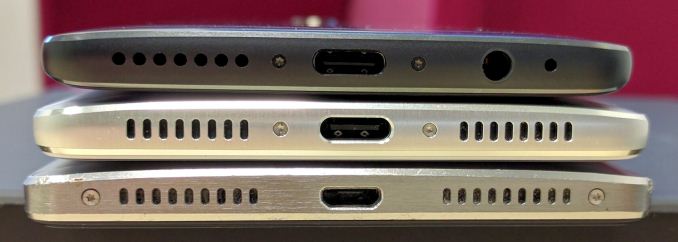
Top to bottom: Mate 9 PD, Mate 9, Mate 8.
The PD puts the 3.5mm jack on the bottom, contrary to previous Huawei designs.
The Mate 9 removes the alternate texture on the power button for easy differentiation,
but the PD and Mate 8 have it.
For the 1300 Euro (the PD won't be sold in the US), the PD model is designed as a lifestyle product, for people who buy the car, buy the shoes, then buy the phone. In the box is a custom case designed for the curve screen, a set of custom ear buds, a Supercharger wall wart, a Supercharger car wart, and a standard C-to-C cable.
Gallery: Huawei Mate 9 Porsche Design Unboxing and Hands On Benchmarks





On the benchmarking side, it is worth noting that these results were on near-final software. Huawei is pushing an update out to review units soon to support Android 7.1 and Daydream VR as well as minor OS fixes. But as we only had limited time with the PD, results were taken as is.
So despite the fact that the Mate 9 and PD have the same SoC, the performance of the PD in most situations was lower than that of the Mate 9. I might attribute this to the smaller chassis having lower thermal limits, but even recording 17-minute 4K video on the Mate 9 made it barely warm to touch, so it makes me wonder how the PD is slower in short benchmarks as well.
One part that the PD wins out on is storage. The 256GB solution blows the 64GB Mate 9 for sequential and random performance.Huawei Mate 9 vs Mate 9 PD Mate 9
64GBPorsche Design
256GBJetstream 68.5 68.1 Octane 11958 11657 GeekBench4 ST 1891 1947 GeekBench4 MT 5927 5680 WebXPRT15 154 157 PCMark Work 2.0 6322 6130 PCMark Work 7848 7597 3DMark Slingshot 2109 1926 3DMark Ice Storm Unlimited 26112 24035 Car Chase Offscreen 11 13 Androbench Sequential Read 547.86 759.21 Sequential Write 141.08 251.53 Random Read 94.42 155.52 Random Write 11.25 24.18
Overall, from a brief hands-on, it's clear that the key selling point of the Mate 9 Porsche Design is going to be the exclusivity. It's not aimed at someone like me, who would suggest the Mate 9 (or the recently announced Mate 9 Pro) if budget or performance is a concern.
More...
-
11-18-16, 09:20 AM #6478
Anandtech: Fold Proteins for Charity & Help AnandTech Beat Tom’s Hardware: Starting D
As we approach the holiday season, the fantastic community team that’s responsible for keeping tabs on our publisher’s technology forums – the AnandTech Forums and the Tom’s Hardware Forums – came to us with a request. They wanted to organize a community activity; something fun, something for charity and, most importantly, something immensely geeky. To that end, I’m happy to announce that we’re going to be holding a friendly vicious contest with our compatriots and competitors at Tom’s Hardware in order to answer one of the most important questions of all time: which site is better, AnandTech or Tom’s Hardware?
Starting December 1st, a contest is going to be held between the AnandTech and Tom’s Hardware forums to determine whose forum and whose community was better. And better still, it will be done for charity. As part of the contest, our publisher, Purch, will be furnish a prize for charity, a $2,500 donation to the Child’s Play charity, which will be made on behalf of the winning team.
As for the contest itself, it seemed only appropriate given the two sites’ history that the challenge be computing related, so we decided to compete in the field of distributed computing. What we settled on is to hold a race of sorts using the popular Folding@Home client.
In a nutshell, Folding@Home is a long-standing distributed computing project organized by Stanford University that allows individuals to contribute computing time to Stanford’s research. This in turn helps the researchers in combating the illnesses that emerge as a result of proteins not folding correctly, such as Alzheimer's disease and Huntington's disease. Folding@Home has now been going on for over a decade and a half. And along with a long-standing AnandTech folding team, we’ve even used it in GPU benchmarks for a few years now.
Kicking off on December 1st, we will be holding a one-week Folding race to see which team is better. The more computer time donated to Folding@Home – the more protein folding work completed – the more points a team will score, with the highest scoring team being crowned the winner.
AnandTech of course is no slouch when it comes to distributed computing. Our team, the aptly named Team AnandTech, has been at it since late 1998, which is almost as long as AnandTech has operated. Among its notable accomplishments is beating the likes of the Macintosh evangelists, Slashdot, Tweakers.net, and more across over a dozen distributed computing projects ranging from computer science to biology to hunting for alien signals.
Meanwhile for reasons beyond my understanding, my colleague over at Tom's Hardware, Fritz Nelson, decided to take us on despite the fact that this is practically a home field advantage for Team AnandTech. Suffice it to say, Tom’s Hardware doesn't have team members with the experience or the dedication of Team AnandTech; in other words, they don't stand a chance. And with your help, I want to prove that while adding Tom’s to the list of teams that Team AnandTech has defeated. If nothing else, think of it as doing a favor for Tom's Hardware: after we've burned them in this race, they'll finally be able to put their thermal imaging camera to good use.
Ultimately this race is for fun, but it’s also for a good cause. Donating computing time to Folding@Home helps researchers to better understand folding-related diseases, and the $2,500 that our publisher is putting up as part of this contest is going to a wonderful cause that is the appropriately geeky Child’s Play charity. As a result I’d like to encourage everyone to take part in December.
The full details on the contest, including how to download the Folding@Home client and join Team AnandTech, our distributed computing team, can be found here. And be sure to drop on by our distributed computing forum and say hello; the team captain is keeping track of how many people sign up, and it's the best place to go to connect with the other team members and to get answers to any questions.
More...
-
11-18-16, 05:03 PM #6479
Anandtech: Game Bundles: Get Civilization VI, Doom, Watch_Dogs 2 for Free with AMD &
From time to time companies bundle the latest games with their hardware in a bid to attract attention of gamers and to make their products more competitive. Such promotions are mutually beneficial: for gamers, it is a good way to upgrade and save some money on titles, while for companies it is an efficient way to increase sales. Recently AMD and Samsung have launched campaigns that add a free digital copy of various digital games with their products, including Civilization VI, Doom and Watch_Dogs 2.
AMD: Get Civilization VI and Doom for Free
Running from October 27 to January 27 (or when AMD runs out of Doom codes), the chipmaker working with the usual etailers (Amazon, Newegg, etc) to include a voucher for Doom as a motherboard bundle. This bundle covers most AM3+ motherboards, but it also covers top-to-bottom AMD systems that use an AM3+ motherboard, AMD FX CPU, and an AMD Radeon graphics card. AMD has not published the exact list of AM3+ motherboards that come with a free digital copy of Doom, but more information can be obtained from AMD’s Rewards web-site.
Meanwhile it is noteworthy that this week AMD also initiated its new Civilization VI promotion for Radeon graphics cards. To get a free copy of the latest in the just-one-more-turn-before-bed gaming series, you will need to buy an AMD Radeon RX 480 (or a PC with such a board inside) from an eligible retailer. Right now, the campaign is already live in some countries, and will eventually spread to other regions as well.
Samsung: Watch_Dogs 2 for FreeAMD's Civilization IV and Doom Campaigns Hardware Game Campaign End Date AM3+ Motherboard Doom January 27, 2017 AMD Radeon RX 480 Civilization VI January 15, 2017
In the recent years Samsung has made inroads into gaming PCs with its high-performance SSDs based on its 3D V-NAND memory. At times, Samsung bundled popular titles with its drives, and its new Watch_Dogs 2 campaign expands to curved displays as well.
On the SSD side of matters, Samsung latest bundle covers most of their V-NAND SSDs, including the recently launched 960 PRO & EVO, and their 850 SATA counterparts. Also covered in this bundle is the company’s Portable SSD, the T3. Meanwhile on the monitor side of matters, the bundle covers Samsung’s CFG70 or CF791 curved monitors. The bundle will be available in North America at select retailers only until December 31, 2016, or while coupons last.
It is noteworthy that Samsung is promoting its curved displays with and without quantum dot technology among gamers using a free game bundle campaign. While curved monitors are available from all major display suppliers, they are not very popular. Meanwhile, Samsung seems to see potential of such monitors for this market segment, which is why it will add a free copy of Watch_Dogs 2 to its CFG70 and CF791 displays until the end of this year.Samsung's Watch_Dogs 2 Promo Campaign SSDs Model Form-Factor Capacity Notes 960 PRO M.2 512 GB, 1 TB, 2 TB 48-layer MLC V-NAND 960 EVO M.2 500 GB, 1 TB 48-layer TLC V-NAND 850 PRO 2.5" 512 GB, 1 TB 32-layer MLC V-NAND 850 EVO M.2, mSATA 500 GB, 1 TB TLC V-NAND Portable SSD T3 USB 3.1 Type-C 500 GB, 1 TB, 2 TB 32-layer TLC V-NAND Curved Displays Model Diagonal Resolution Notes CFG70 24" 1920×1080 Features quantum dot technology, 1800R Curvature CFG70 27" unknown CF791 34" 3440×1440 1500R curvature
Related Reading:
- Samsung CFG70: Curved 144Hz Displays with Quantum Dot Backlighting and AMD FreeSync
- GIGABYTE Unveils New 990FX and 970-Gaming Motherboards for AMD FX
- ASUS Launches 970 Pro Gaming/Aura Motherboard: USB 3.1 and M.2 to AMD FX Platform
Sources: AMD, Samsung.
More...
-
11-21-16, 10:11 AM #6480
Anandtech: MSI Releases the 'VR One': A Backpack PC For VR From $1999
MSI has started to sell its VR One backpack PC designed for virtual reality enthusiasts. The MSI VR One system is now available in the US, and comes equipped with an Intel Core i7 and an NVIDIA GeForce GTX 1060/1070. The backpack promises to pack a lot of performance and can even be overclocked. However, the combination of high FPS and a relative freedom of movement is going to cost: the system starts at $1999.
MSI’s VR One backpack PCs rely on the company’s expertise in mobile computing and high-end notebooks. The VR One systems are based on the Intel Core i7-6820HK (4C/8T, 2.7/3.6 GHz, 8 MB LLC, 45 W) processor with an unlocked multiplier as well as NVIDIA’s GeForce GTX 1060 6 GB (VR One 6RD) or GeForce GTX 1070 8 GB (VR One 6RE) GPUs. The key components of the backpack are cooled down using an MSI proprietary cooling system featuring nine heatpipes and two blowers that ensure that the CPU and GPU never overheat even if overclocked (the HM170 chipset supports CPU overclocking). In fact, MSI even supplies its special Shift application that allows the user to boost both the compute and the cooling performance with just a few clicks.
The system comes equipped with a 256 or a 512 GB M.2 PCIe 3.0 x4/NVMe SSD with up to 2.2 GB/s read performance and have another M.2/SATA slot for an additional drive to install more gaming titles. No spinning HDD is equipped by default for obvious reasons.
One of the key things about VR gaming backpack PCs is connectivity. The VR One features all the ports needed to connect a VR headset like the HTC Vive with the ports right on top. To simplify connection of the Vive, MSI even supplies a special 3-in-1 cable with HDMI, USB 3.0 and power wires. Moreover, the system packs the Rivet Networks Killer 1535 Wi-Fi 802.11 ac + Bluetooth controller as well as Intel’s Alpine Ridge controller to enable one USB-C/Thunderbolt 3 port.MSI VR One Specifications VR One 6RD VR One 6RE CPU Intel Core i7-6820HK
4 cores/8 threads
2.7 GHz/3.6 GHz
8 MB LLC
45 WPCH Intel HM170 Graphics NVIDIA GeForce GTX 1060
1280 stream processors
80 texture units
48 ROPs
192-bit memory interface
6 GB of GDDR5 8 GT/s memoryNVIDIA GeForce GTX 1070
2048 stream processors
128 texture units
64 ROPs
256-bit memory interface
8 GB of GDDR5 8 GT/s memoryMemory Two SO-DIMM slots
16 GB DDR4-2133 installed
compatible with up to 32 GB of DDR4-2133Storage 256 GB M.2/PCIe SSD
(up to 2.2 GB/s)
+ one extra M.2/SATA slot512 GB M.2/PCIe SSD
(up to 2.2 GB/s)
+one extra M.2/SATA slotWi-Fi Rivet Networks Killer 1535 802.11ac + BT 4.1 Ethernet None Display Outputs 1 × HDMI 2.0
1 × mDP 1.2Audio 3.5 mm audio in and 3.5 mm audio out USB 4 × USB 3.0 Type-A (5 Gbps)
1 × Thunderbolt 3 (40 Gbps)/USB 3.1 Type-C (10 Gbps)Other I/O DC12V-out for HTC Vive Dimensions 409 mm × 292 mm × 54 mm
16.1 × 11.49 × 2.12 inchesWeight 3.6 kg PSU External Batteries 91 Wh OS Windows 10 Pro
The whole design of VR One’s motherboard resembles the design of MSI's gaming laptops, which helps to make the PC relatively thin (54 mm) and relatively light (3.6 kilograms). Meanwhile, two hot-swappable batteries enable MSI’s VR One to work completely autonomously for about 1.5 hours each. In fact, the whole outside design of the MSI VR One is optimized primarily for backpack, not desktop operation (unlike ZOTAC’s VR Go). While the VR One can be put on a desk, it will have to lie down, making its ports less accessible. So, the VR One is a system made primarily for virtual reality gaming, not for general-purpose computing.
Right now MSI offers the VR One 6RD with the GeForce GTX 1060 and a 256 GB SSD for $1999 in the U.S. The more advanced VR One 6RE with the GeForce GTX 1070 and a 512 GB SSD will be available a little later for $2299.
Gallery: MSI Begins to Sell VR One Backpack PC: Core i7, GeForce GTX, TB3, Starts at $1999_thumb.png)
_thumb.png)
_thumb.png)
_thumb.png)
_thumb.png)
_thumb.png)
Related Reading:
- ZOTAC Announces VR GO Backpack PC with GeForce GTX 1070
- HP and MSI Demonstrate Backpack PCs for VR Gaming
- Alienware 13 R3: Quad-Core CPU, GeForce GTX 1060, QHD OLED, VR Ready
More...
Thread Information
Users Browsing this Thread
There are currently 66 users browsing this thread. (0 members and 66 guests)




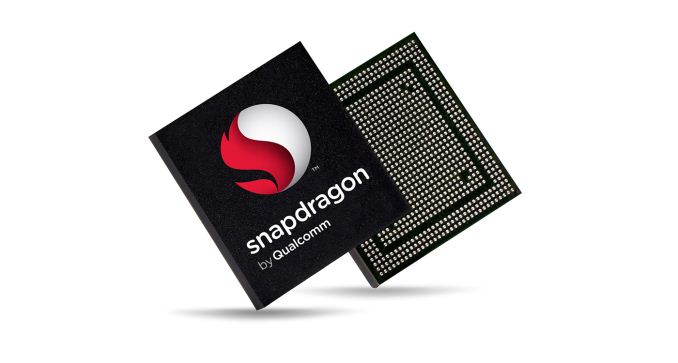
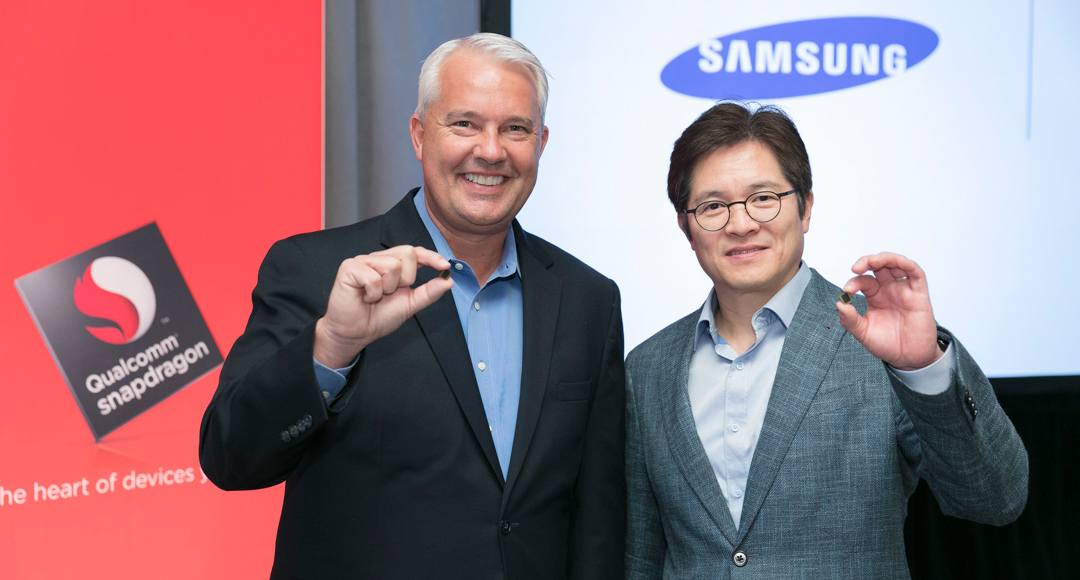

 Quote
Quote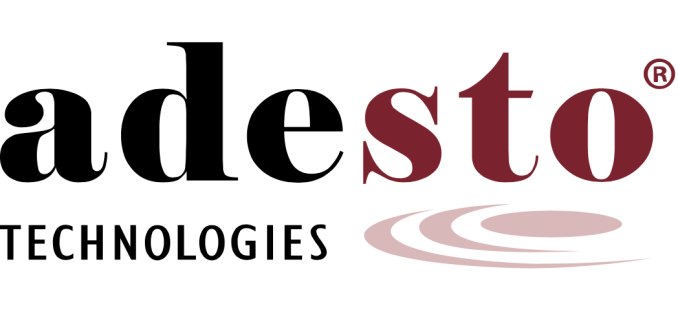


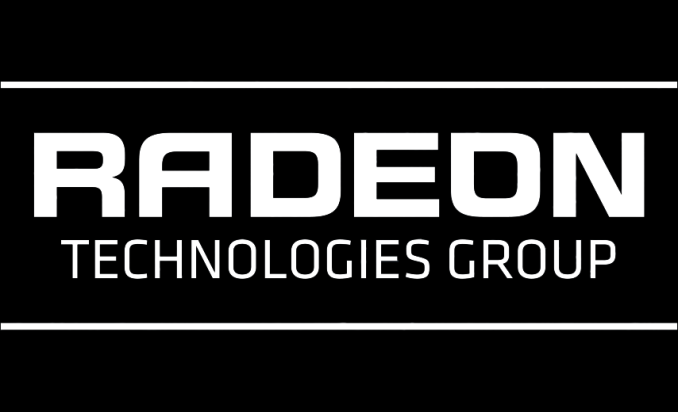
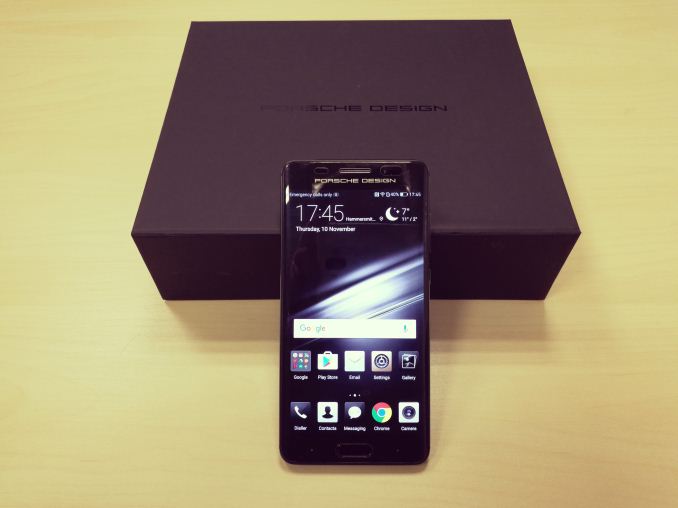
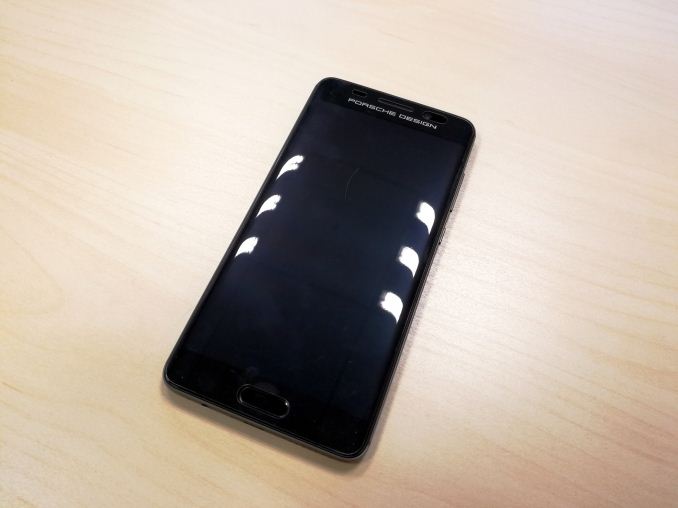
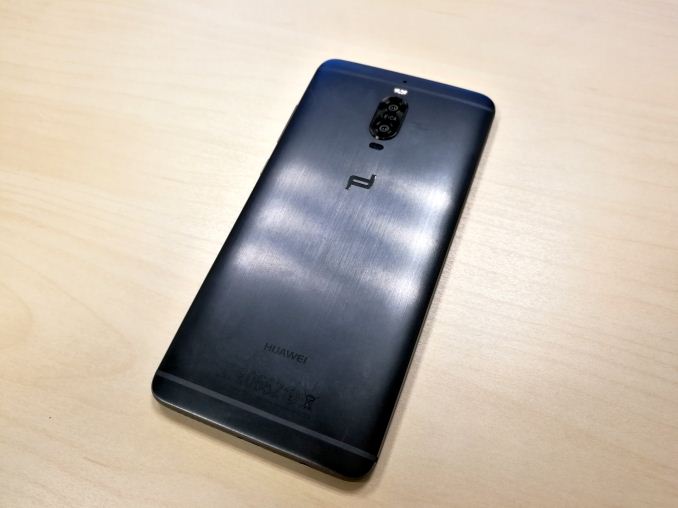

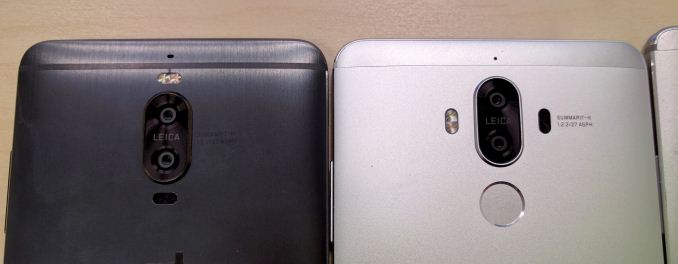
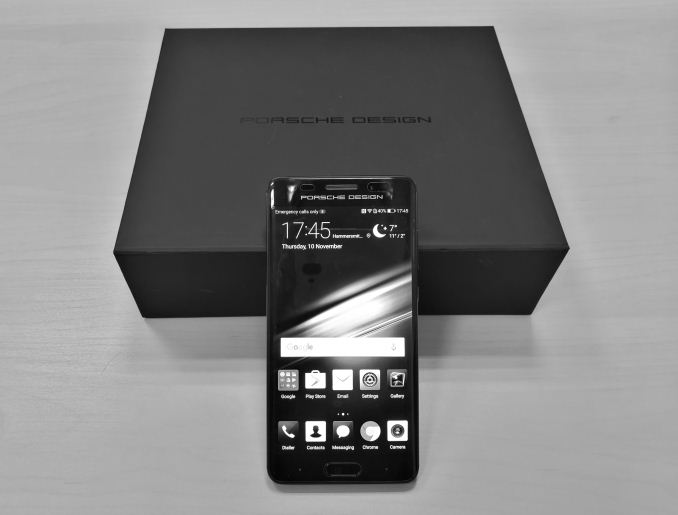
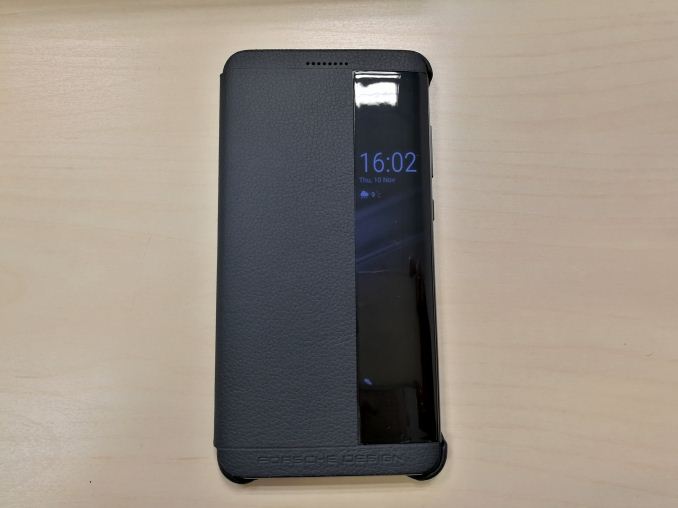
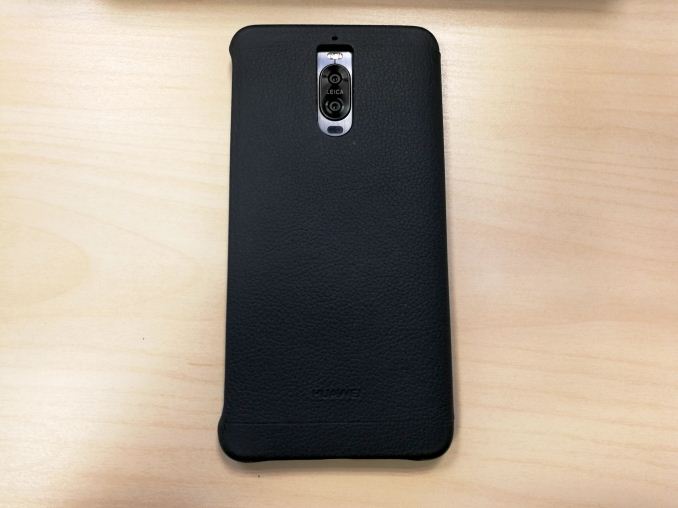



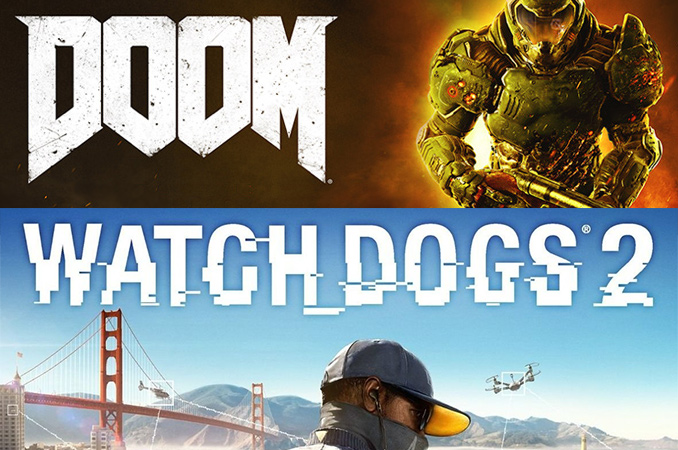

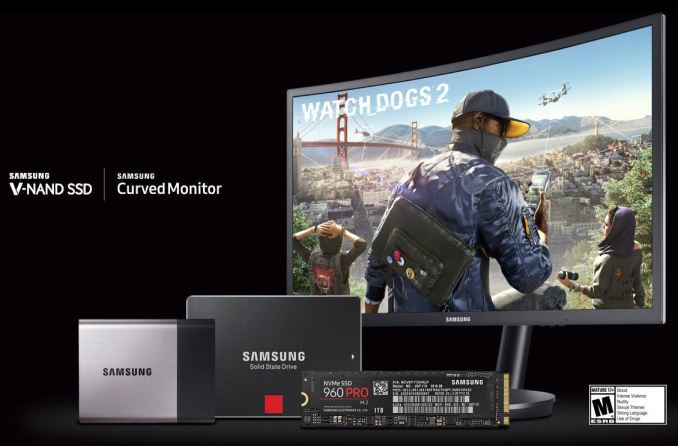
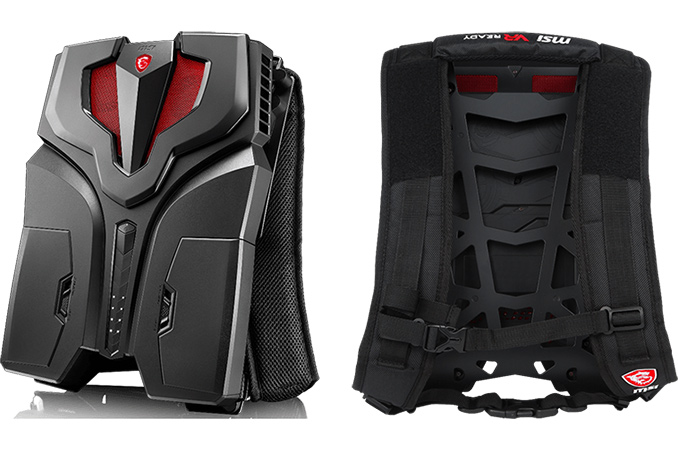
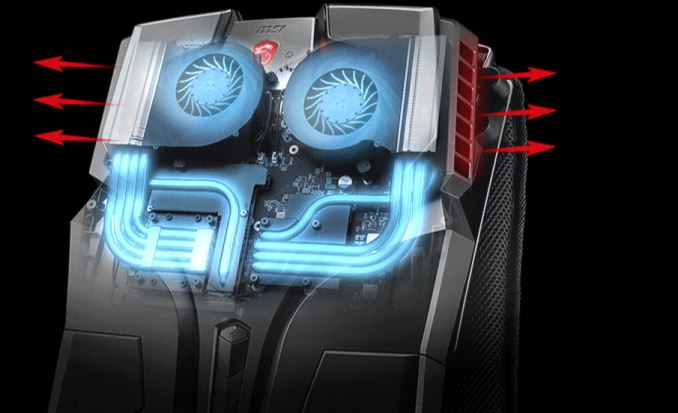
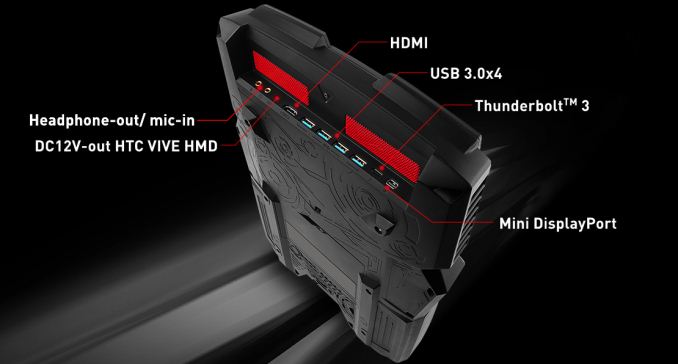
















Bookmarks